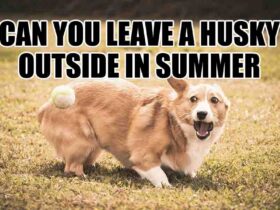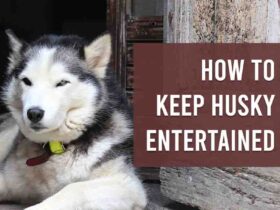Huskies, with their striking appearance and adventurous spirit, have captured the hearts of dog lovers worldwide. Yet, for those who share their homes with Huskies and feline companions, a crucial question often arises: Are Huskies good with cats? The dynamic between these two beloved pet species can be complex and shaped by various factors. In this article, we will delve into the world of Huskies and cats, exploring their temperaments, behaviors, and the steps you can take to ensure a harmonious coexistence between these two diverse creatures. Whether you’re a Husky owner considering adding a cat to your household or a cat enthusiast thinking about welcoming a Husky, this guide will provide valuable insights to help you make an informed decision and foster a peaceful environment for all your furry family members.
Are Huskies Good With Cats?
Huskies can be good with cats, but it largely depends on the individual dog’s temperament, early socialization, and the cat’s personality. Huskies are known for their high prey drive, so careful introduction and supervision are crucial. Proper training and a safe environment can help foster a positive relationship. It’s important to note that not all Huskies will get along with cats, so each situation should be assessed on a case-by-case basis.
Preparing For The Introduction Of A Husky To A Cat
Preparing to introduce a Husky to a cat is a crucial step in ensuring a harmonious coexistence between these two animals. Here are some critical steps to consider when preparing for their initial meeting:
Separation: Before attempting face-to-face interaction, separate the Husky and the cat in different areas of your home. This separation allows them to become familiar with each other’s scents, sounds, and presence without direct contact. It also reduces the immediate stress of a new presence.
Controlled Environment: Choose a neutral, controlled environment for their first meeting. Avoid either pet’s territory, as this can lead to territorial aggression. Use a leash for your Husky to maintain control, and keep the cat in a carrier or on a leash. This ensures that both pets can’t lunge at each other, creating a safer atmosphere.
Supervised Meeting: When introducing them, have both animals under close supervision. Allow them to observe each other from a distance while you watch their reactions closely. Staying calm and composed during this initial encounter is crucial, as your anxiety can transfer to your pets.
Positive Reinforcement: Use treats, praise, and gentle encouragement to reward calm and non-aggressive behavior from both pets. Provide treats when they show interest in each other without signs of aggression. This positive reinforcement can help associate each other’s presence with positive experiences.
Short Sessions: Short the first meetings, typically around 10-15 minutes. Gradually extend the duration as they become more comfortable with each other. Avoid forcing interaction; it’s more about letting them acclimate to each other’s presence at their own pace.
Repeat and Be Patient: It’s unlikely that your Husky and cat will instantly become best friends. It may take several meetings over days or weeks before they become comfortable in each other’s presence. Be patient and continue the process, respecting the pace at which both pets are comfortable.
Watch for Signs: During the meetings, be vigilant for any signs of aggression, fear, or stress from the Husky or the cat. Look for body language cues like hissing, growling, raised hackles, or a stiff posture. If either animal displays discomfort, immediately separate them and try again later. Aggression or a lack of improvement may require professional help from a veterinarian or animal behaviorist.
Remember that each introduction is unique, and the pace of acceptance may vary significantly. Always prioritize the safety and well-being of both pets throughout the process. With time, patience, and careful management, many Huskies and cats can learn to coexist peacefully and develop strong bonds.
Signs Of Compatibility
Recognizing signs of compatibility between your Husky and cat is essential to gauge whether their relationship is progressing positively. These signs indicate that they are becoming comfortable with each other and may eventually coexist harmoniously:
- Curiosity and Interest: One of the first positive signs is when your Husky and cat display curiosity and interest in each other’s presence. They might approach each other cautiously, sniffing and investigating without displaying signs of fear or aggression. This curiosity often manifests through relaxed body language, wagging tails from the Husky, and upright, confident postures from the cat.
- Playful Interactions: Playfulness between the two pets strongly indicates compatibility. Playful behavior may include gentle chasing, batting at each other’s paws, or even sharing toys. It’s important to note that play should be non-aggressive, enjoyable for both parties and not escalate into rough behavior.
- Relaxed Body Language: Watch for relaxed body language when the Husky and the cat are in each other’s presence. The Husky’s posture should be loose, with a wagging tail, and the cat should have an upright stance with a high tail. Signs of relaxation, such as both pets lying comfortably in each other’s company, are promising indications.
- Sharing Space: As compatibility develops, both pets should be able to share the same space comfortably. They can rest in the same room or area without constant vigilance or tension. They may even choose to be close to each other without any issues.
- Absence of Aggressive Behavior: One of the most crucial signs is the absence of aggressive behaviors. Incompatible pairs often exhibit growling, hissing, lunging, or biting, which indicate discomfort and conflict. When these behaviors are absent, it suggests that the pets are becoming more accustomed to each other’s presence and are less threatened.
- Mutual Grooming: Sometimes, you may observe mutual grooming between your Husky and cat. Grooming is a bonding behavior in many species and signifies a level of trust and affection. If both pets are comfortable enough to groom each other, it’s a promising sign.
Signs of Conflict
Recognizing signs of conflict between your Husky and cat is crucial to ensure their safety and well-being. Conflict can arise due to territorial disputes, fear, or a mismatch in temperament. Here are some signs to watch for that indicate tension or conflict between your pets:
- Audible Displays of Discomfort: Growling, hissing, or yowling are vocalizations that both Huskies and cats may use to express discomfort or assert dominance. These sounds typically emerge when one pet feels threatened, stressed, or challenged by the presence of the other.
- Physical Aggression: Lunging, charging, or physically attacking each other are clear signs of conflict. Such aggressive behavior can escalate rapidly and result in injuries to either pet, making immediate intervention necessary.
- Piloerection (Raised Hackles): When the Husky or the cat’s fur stands on end, it’s known as piloerection. This response reflects heightened stress, fear, or readiness for a confrontation. It’s a visible indication of discomfort.
- Stiff or Defensive Body Language: Observe their body language closely. Tense, stiff postures, a fixed gaze, a raised tail, or a puffed-up tail, in the case of a cat, are signs of aggression or a defensive stance.
- Blocking or Herding Behavior: Huskies, with their herding instincts, may try to block the cat’s movement, nip at it, or chase it. While this behavior is natural for Huskies, it can be distressing and conflict-inducing for the cat.
- Biting or Snapping: Aggressive actions such as biting or snapping, whether from the Husky or the cat, are alarming signs of conflict. Swift intervention is necessary to prevent harm to either pet.
- Fleeing or Hiding: If your cat consistently tries to avoid or escape from the Husky, hides when it’s around or appears distressed, it indicates fear and potential conflict.
Recognizing these signs early is crucial to prevent escalating conflicts and ensure the safety and well-being of both pets. If you observe any of these signs, it’s essential to intervene immediately by separating the animals and seeking guidance from a professional animal behaviorist or a veterinarian. Professional help can provide strategies to address the root causes of conflict and work toward a more peaceful coexistence between your Husky and your cat.
Tips For A Peaceful Coexistence
Achieving a peaceful coexistence between your Husky and your cat is an admirable goal, and it requires thoughtful strategies and consistent efforts. Here are some tips to help foster a harmonious relationship between these two pets:
Gradual Introduction:
As previously mentioned, introducing your Husky and cat gradually is essential. Start with physical barriers such as baby gates or separate rooms, allowing them to observe each other without direct contact. Over time, decrease these barriers to promote familiarity.
Positive Reinforcement:
Reinforce positive behavior with both pets during interactions. Consistently reward them with treats, praise, or affection when they display calm and non-aggressive behavior in each other’s presence. This positive association helps them feel comfortable around each other.
Separate Feeding Areas:
It’s important to provide separate feeding areas for your Husky and cat. This prevents resource guarding and reduces the potential for conflict during meal times. Ensure each pet has access to their own food and water bowls.
Cat-Friendly Vertical Spaces:
Cats feel more secure when they have access to vertical spaces. Install shelves, perches, or cat trees in your home to allow your cat to escape to a higher vantage point when needed. This gives them a sense of control and safety.
Husky Exercise and Stimulation:
Huskies are high-energy dogs that require regular exercise and mental stimulation. Daily walks, playtime, and interactive toys can help reduce their energy levels and prevent them from fixating on the cat.
Behavioral Training:
Invest time in training both your Husky and your cat. Obedience training for the Husky and litter box training for the cat is fundamental. Training reinforces discipline and improves their behavior and responsiveness to commands.
Remember that each pet is unique, and the timeline for peaceful coexistence may vary. The key is prioritizing their safety, monitoring their interactions, and creating an environment where your Husky and cat feel secure and respected. With patience, consistency, and a proactive approach, you can help them build a positive relationship and enjoy a harmonious home together.
Bottom Line
In conclusion, while Huskies and cats can coexist peacefully and form strong bonds, successful integration requires careful planning, patience, and ongoing supervision. Understanding the unique characteristics of both breeds, creating safe spaces, gradual introductions, and providing mental and physical stimulation for your Husky are critical steps in ensuring a harmonious household. By following these guidelines and being attentive to your pets’ needs, you can cultivate an environment where your Husky and cat can thrive together, sharing your home with love, companionship, and mutual respect.







Leave a Reply